Abstract
Microbial flora of the skin of three human population groups representing different natural environments was examined quantitatively and qualitatively to determine whether environmental differences in temperature and humidity can influence the microbial flora of normal skin. Five anatomical skin sites - hands, back, axillae, groin, and feet - were sampled from 10 subjects working in a high-humidity, high-temperature environment, 10 subjects from a low-temperature, high-humidity environment, and 10 subjects working in a moderate-temperature and low-humidity environment. Bacterial populations were significantly larger from the back, axillae, and feet in individuals from the high-temperature and high-humidity environment as compared to the moderate-temperature, low-humidity environment. High humidity and low temperature had no significant effect on total populations, but this group showed a higher frequency of isolation of fungi, and gram-negative bacteria from the back and feet. Although there was an indication that increase in the environmental humidity could result in an increased frequency of isolation of gram-negative bacteria, there was no evidence that an increase in either temperature or humidity altered the relative proportions of gram-negative bacteria in the predominantly gram-positive microbial flora found on normal skin. It was concluded that, although climatic changes may cause fluctation in microbial populations from certain sites, they are not a major influence on the ecology of the microbial flora of normal skin in the natural environment. The variables introduced by studying individuals in their natural environment and the influence of these on the results are discussed.
Full text
PDF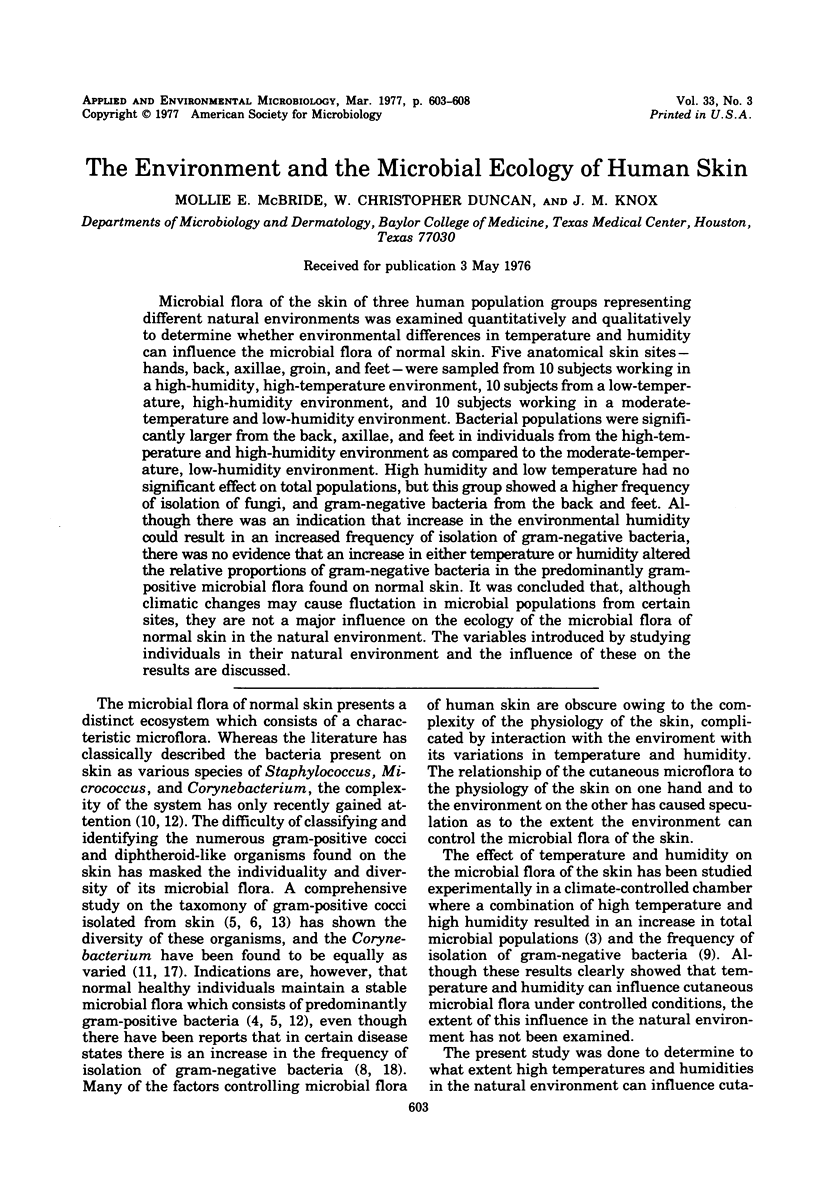
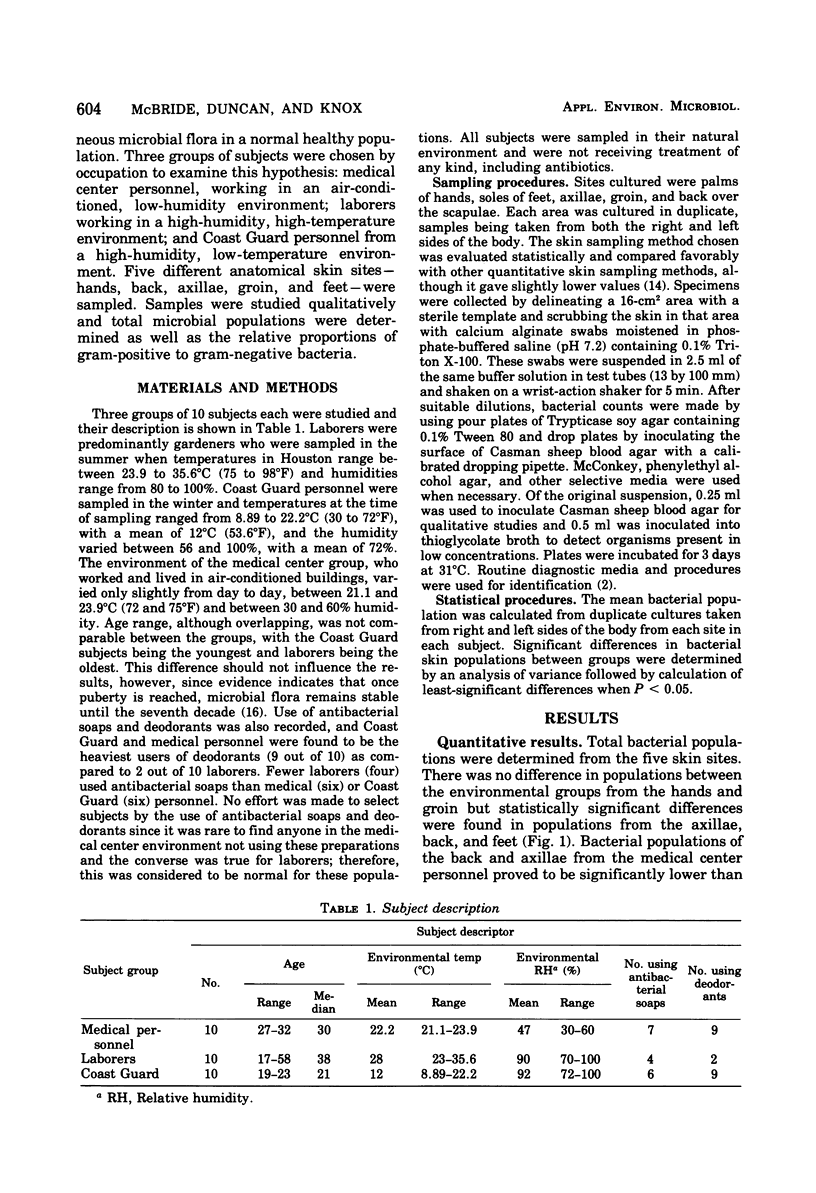
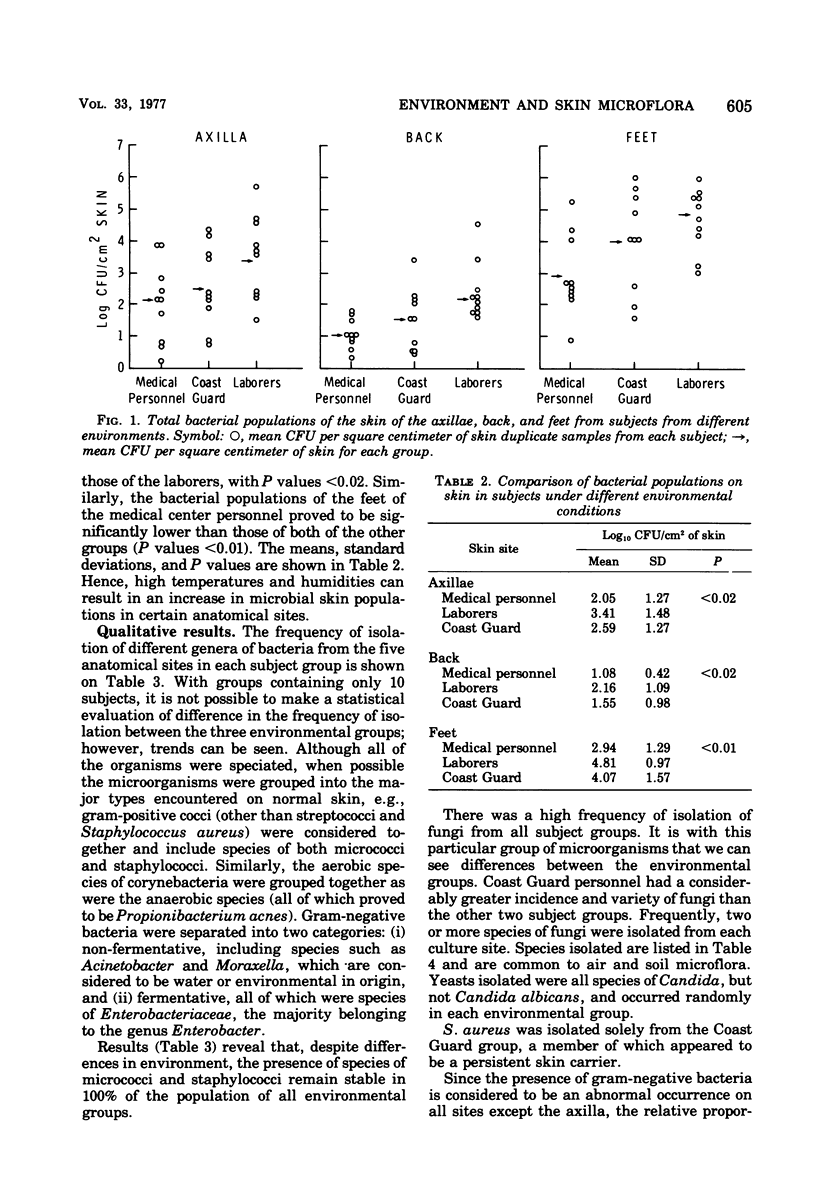
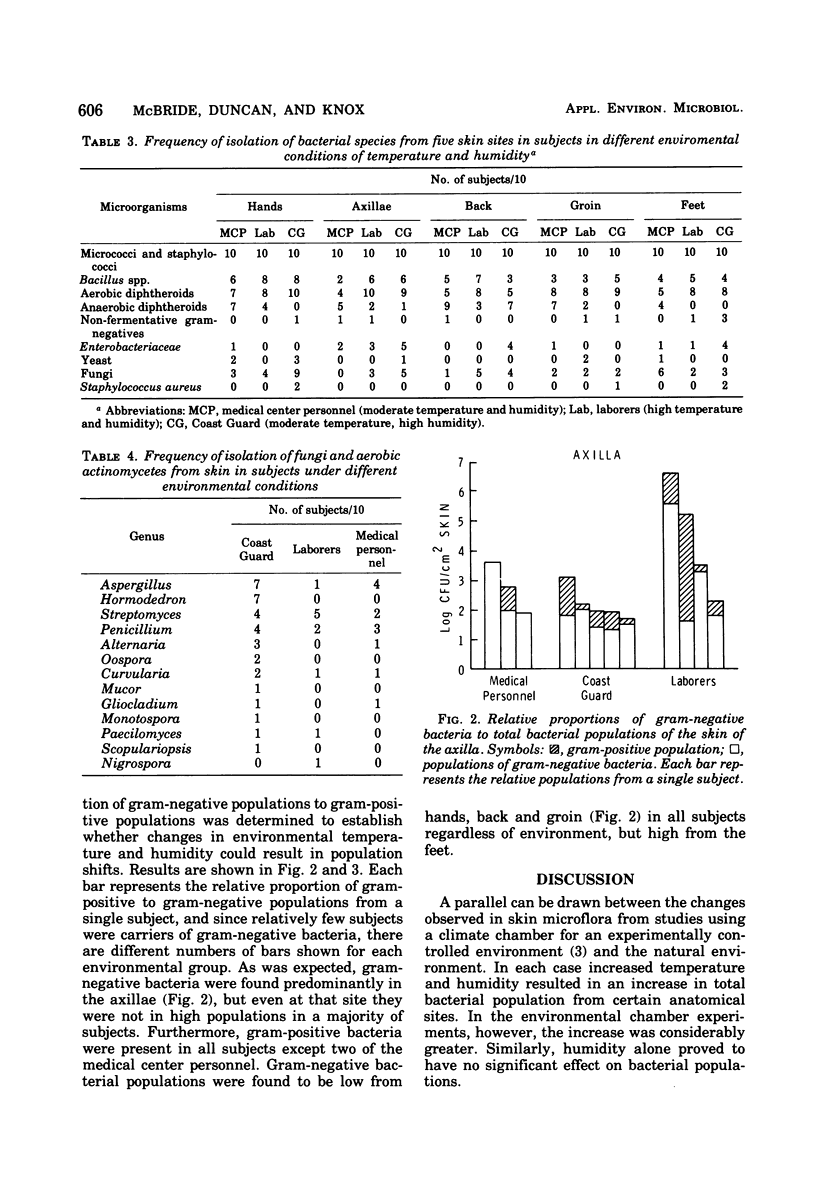
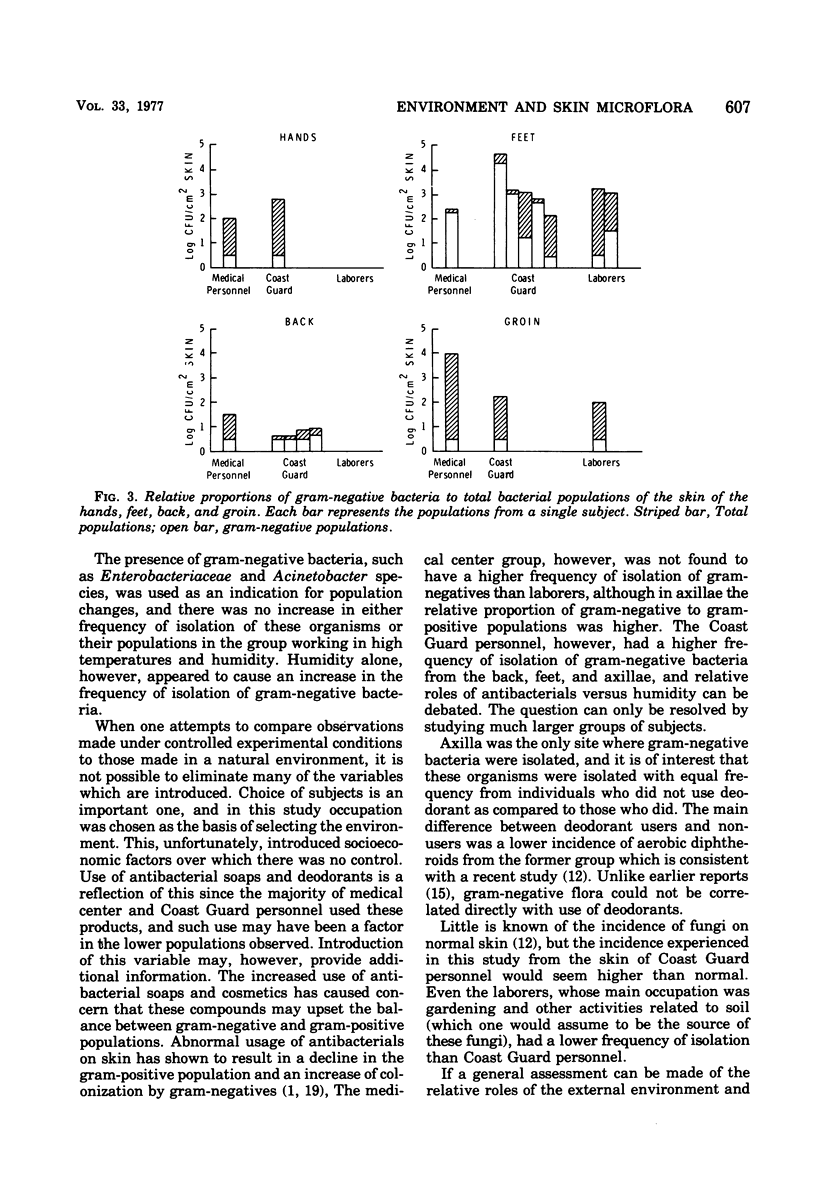
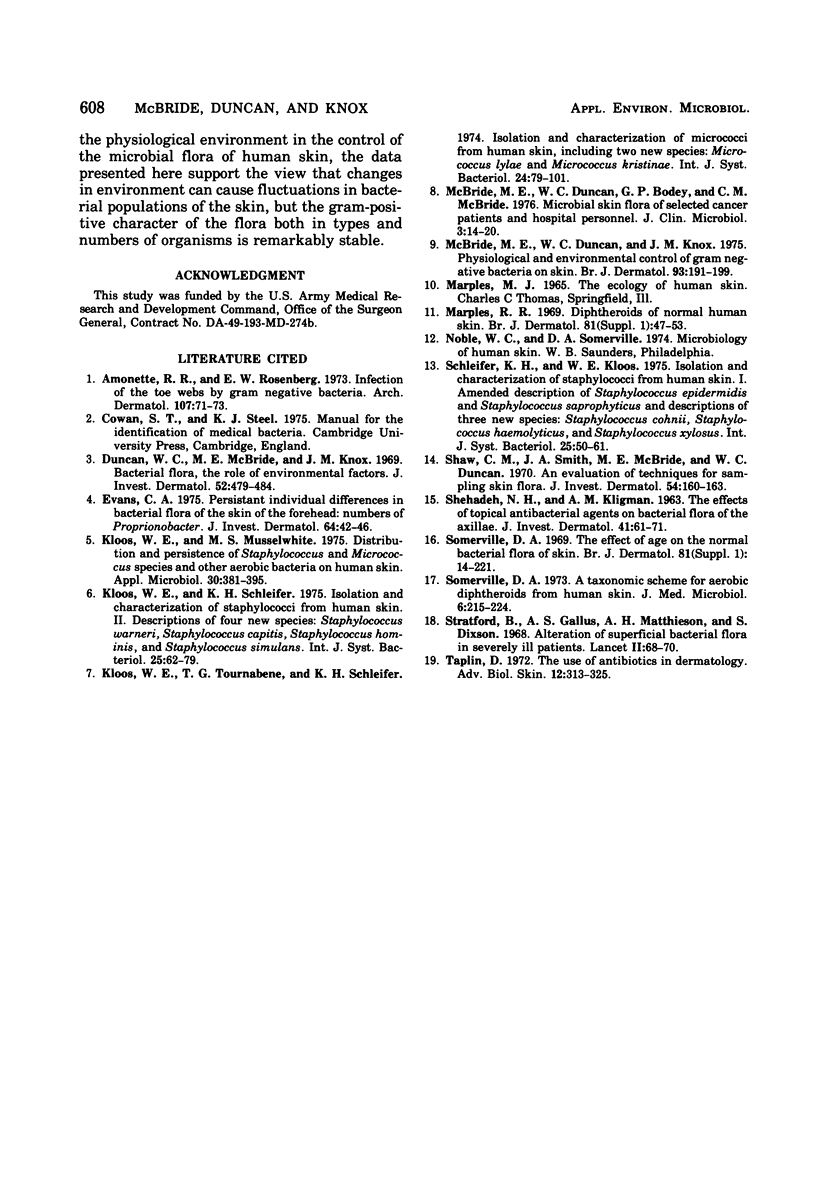
Selected References
These references are in PubMed. This may not be the complete list of references from this article.
- Amonette R. A., Rosenberg E. W. Infection of toe webs by gram-negative bacteria. Arch Dermatol. 1973 Jan;107(1):71–73. [PubMed] [Google Scholar]
- Duncan W. C., McBride M. E., Knox J. M. Bacterial flora. The role of environmental factors. J Invest Dermatol. 1969 May;52(5):479–484. doi: 10.1038/jid.1969.81. [DOI] [PubMed] [Google Scholar]
- Evans C. A. Persistent individual differences in the bacterial flora of the skin of the forehead: numbers of propionibacteria. J Invest Dermatol. 1975 Jan;64(1):42–46. doi: 10.1111/1523-1747.ep12540897. [DOI] [PubMed] [Google Scholar]
- Kloos W. E., Musselwhite M. S. Distribution and persistence of Staphylococcus and Micrococcus species and other aerobic bacteria on human skin. Appl Microbiol. 1975 Sep;30(3):381–385. doi: 10.1128/am.30.3.381-395.1975. [DOI] [PMC free article] [PubMed] [Google Scholar]
- Marples R. R. Diphtheroids of normal human skin. Br J Dermatol. 1969;81(Suppl):47+–47+. doi: 10.1111/j.1365-2133.1969.tb12833.x. [DOI] [PubMed] [Google Scholar]
- McBride M. E., Duncan W. C., Bodey G. P., McBride C. M. Microbial skin flora of selected cancer patients and hospital personnel. J Clin Microbiol. 1976 Jan;3(1):14–20. doi: 10.1128/jcm.3.1.14-20.1976. [DOI] [PMC free article] [PubMed] [Google Scholar]
- McBride M. E., Duncan W. C., Knox J. M. Physiological and environmental control of Gram negative bacteria on skin. Br J Dermatol. 1975 Aug;93(2):191–199. doi: 10.1111/j.1365-2133.1975.tb06740.x. [DOI] [PubMed] [Google Scholar]
- SHEHADEH N. H., KLIGMAN A. M. The effect of topical antibacterial agents on the bacterial flora of the axilla. J Invest Dermatol. 1963 Jan;40:61–71. doi: 10.1038/jid.1963.10. [DOI] [PubMed] [Google Scholar]
- Shaw C. M., Smith J. A., McBride M. E., Duncan W. C. An evaluation of techniques for sampling skin flora. J Invest Dermatol. 1970 Feb;54(2):160–163. doi: 10.1111/1523-1747.ep12257936. [DOI] [PubMed] [Google Scholar]
- Somerville D. A. A taxonomic scheme for aerobic diphtheroids from human skin. J Med Microbiol. 1973 May;6(2):215–224. doi: 10.1099/00222615-6-2-215. [DOI] [PubMed] [Google Scholar]
- Somerville D. A. The effect of age on the normal bacterial flora of the skin. Br J Dermatol. 1969;81(Suppl):14+–14+. [PubMed] [Google Scholar]
- Stratford B., Gallus A. S., Matthiesson A. M., Dixson S. Alteration of superficial bacterial flora in severely ill patients. Lancet. 1968 Jan 13;1(7533):68–68. doi: 10.1016/s0140-6736(68)90068-8. [DOI] [PubMed] [Google Scholar]


